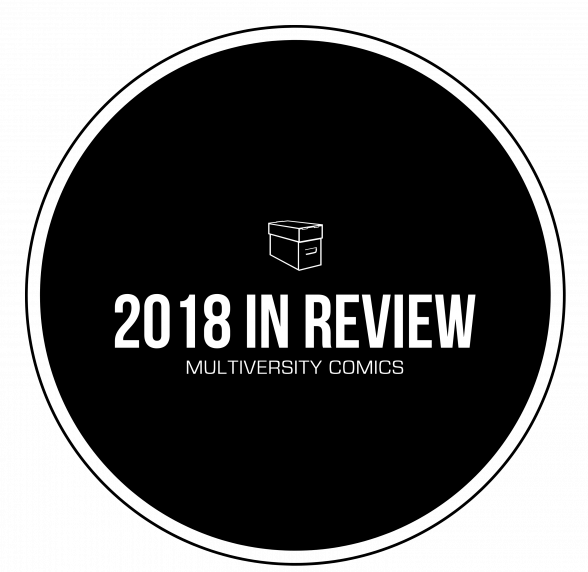
While comics are thought of, still, as primarily a serialized medium, there are dozens of really great original graphic novels released each year. A graphic novel is not just a long comic; it is a comic that is designed to tell a complete story with a beginning, middle, and end, in one volume. There were some incredible OGNs released this year, and our staff selected ten great ones to highlight.
10. Follow Me In

Avery Hill Publishing has had a killer year in terms of graphic novel output, with my personal pick for leader of the pack being “Follow Me In.” Katriona Chapman’s stunningly drawn book tells an autobiographical tale of a young couple’s year living in Mexico, at least on the surface. And in that regard, Chapman pours a lot of charming information and research about the country that it can feel as enlightening as a well-written travel guide. There are pages dedicated to Kat and Richard’s experiences with local cultures, such as foods, iconic scenery and a whole bunch more. Written with Chapman’s casual dialogue style and accompanied by lush, pencil-colored scenes, the book has a friendly and intimate tone when looking through at first glance.
However, underneath the initial allure, Chapman tells a poignant story of a struggling romance and dealing with alcoholism. Her powerful emotive work will often suggest much more than what is being said with words, lending a super life-like quality to the characters. Both Kat and Richard have incredible rapport when they experience a happy moment, yet there is always a lingering sense of fear, of slipping up, that Chapman goes really well into detail about a third of the way in the book. We feel sorry for Richard because of how well Chapman humanizes him when traveling with Kat, and though we may despise his alcoholic slips, we can’t help but feel even more sympathetic as he continues to be painfully human. Chapman truly balances a warm, welcoming visual quality with dark, realistic undertones, and it makes for a spectacular final product. –Rowan Grover
9. A Quick and Easy Guide to They/Them Pronouns

Archie Bongiovanni and Tristan Jimerson’s humorous and often snarky explanation of the use of they/them pronouns hits our list both for what it’s attempting to do and how well they accomplish it. They managed to create a mostly entertaining, sometimes narrative, teaching tool that can life the burden that non-binary people face when explaining their request to be refers to as they or them. Using the graphic novel format they use themselves as characters to open the conversation with the audience in a playful but informative tone. The book never gets confrontational with its readers and poses any conflict as a point of hypothetical discussion between its “characters.” They make a case for having compassion, advocating for others and having patience. This book is on the list for its use of the Graphic Novel format to do something uncommon in the medium, doing it well and creating a tool that is useful in the process. – Greg Lincoln
8. Green Lantern: Earth One
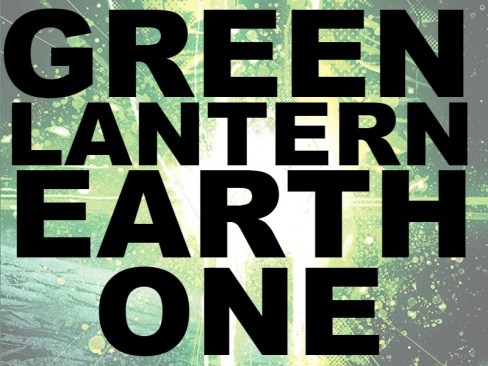
2018 turned out to be a banner year for Green Lantern. Even before the much-hyped relaunch of the main series by Grant Morrison and Liam Sharp, DC released the latest in their ‘Earth One’ line starring a completely different Hal Jordan than we’ve seen before. Creative partners Gabriel Hardman and Corinna Bechko gave us one of the best stories to come out of DC this year.
I think the reason “Green Lantern: Earth One” worked so well for me is that it basically takes Hal Jordan, puts him in a situation more similar to Kyle Raynor’s origin—there is no Green Lantern Corps any more, and Jordan gets the ring by chance, rather than being selected. It’s definitely still Hal Jordan wearing the ring though; even in the completely different setting, Hardman and Bechko nail his characterization. It’s all the more interesting seeing how he acts in a situation we really haven’t seen him in before. What then unravels is the kind of hard sci-fi story that Hardman and Bechko are known for. The result is wildly different than anything we’ve seen from the Green Lantern side of the DC universe, and was sorely needed with the Lantern books pretty much just treading water since Geoff Johns stopped writing them. This book was so good it had me wishing that it was actually the current continuity, and has me excited for a Green Lantern property for the first time in years. – Justin Beeson
Continued below7. Be Prepared

It’s been seven years since Vera Brosgol’s last graphic novel and she returns in top form with “Be Prepared.” It’s as dynamic and kinetic as you’d expect from Brosgol, moving at a brisk pace as it unravels its story. “Be Prepared” takes on a lot of the themes you’d expect from a summer camp story — bullies, homesickness, social anxiety — but there’s an honesty about it here. Feeling left out in her own home, a young Vera convinces her mother to send her to a Russian themed summer camp. It’s here she thinks she’ll find more people like her, since none of her friends are able to relate to her on a cultural level. What follows is a story of a girl trying to navigate what it means to be part of a world but still removed from it. To have it in her background but not as part of her overarching life. She also learns how certain tropes and types spill out across all cultures. Brosgol hits you right in the heart here. By being so open and honest with her experiences, she has hit the empathetic nerve-center. And that would be laudable on its own but Brosgol’s cartooning skills elevate it into the stratosphere. She doesn’t just find the perfect image to move the narrative along but also the precise balance of the frame, those ever-present trees and tents. There’s the minimal use of colors and tones to keep your attention dancing across the page. It’s an experience. – Matt Garcia
6. Sabrina
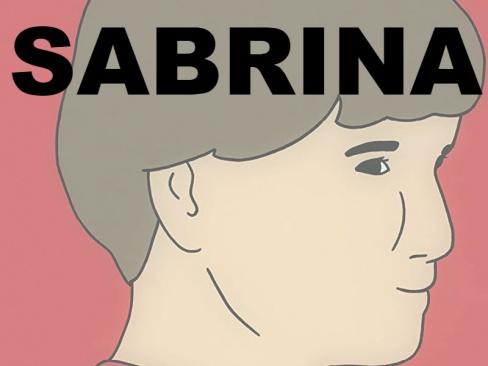
The unfortunate truth is that “Sabrina” could only have come out in 2018. Nick Drnaso’s story of a sudden tragedy (and the media circus that follows) feels so alarmingly of the moment that it could easily have been ripped straight from the headlines. The immediacy of the narrative is only matched by the brutal, somewhat cutting analysis of the importance of truth in a “post-factual” society driven by fake news.
Despite the difficult subject matter, Drnaso never shies away from the heartbreaking emotions of the friends, family and those that surround this violent and unexpected act. When someone’s worst fears are realized, only for those fears to be questioned, pored over and even ridiculed en masse is something terrifyingly real for a growing number of people. Survivors of mass shootings and the loved ones of those taken in such an avoidable way are now coached by volunteers and fellow survivors about the presence of a legion of online deniers: those that believe that these grand tragedies are manipulative fiction orchestrated by the government for whatever reason. All of this gets explored and exposed by Drnaso in unflinching, uncomfortable, sometimes painful detail.
“Sabrina” employs a realism in its pacing that makes events feel like they’re unfolding in real time, and Drnaso’s deft plotting weaves not a familiar narrative rhythm, but rather develops a series of unfolding moments as the story progresses. The result is a structure that reads like falling dominoes: careful, deliberate construction gives way to inevitable emotional collapse. There are no easy answers at the end of “Sabrina,” no exposition that puts to rest the questions you’re left with, the doubts in your mind and the indignation you may feel towards an unfair world. The unfortunate truth is that this is Trump’s America. This is life and death in 2018, and “Sabrina” is the masterpiece that explores it all.- Matt Lune
5. Sheets

When I first picked up Brenna Thummler’s “Sheets,” I expected a few things. I expected a solid story of adolescent worries, some meditation on life and death, and a warm atmosphere to hold it all together. Not only did the book succeed in all of that, it also did something far greater: it heralded the arrival of one of the most notable new cartoonists in recent memory.
Thummler’s art anchors you so firmly in its environments that you always walk away feeling like you just stepped out of the book’s world, the scent of dryer sheets and seaside air lingering in your mind alongside the gentle rustle of autumn leaves. Her art is all about contrasting details. In a single panel, you can see a soft sheet wrinkled with a few thin lines, sitting in front of a wall’s textured wood paneling, next to which sits a flat window with a bit of shine, which itself provides a tiny view of the lush fall foliage outside. This idea of contrast also applies to the character designs, both when looking at aspects of a single design, as well as comparing multiple characters to each other. Based solely on aesthetics, Thummler’s art succeeds masterfully.
Continued belowEven better, though, she uses all of this aesthetic wonder to make the story sing. When you need to be grounded for a scene to work best, Thummler will give you multiple beautiful scene-setting panels in a row. Likewise, when a dialogue-heavy scene needs to move, she will keep the dialogue going over panels of smaller details: a close-up of a character’s mouth, or of the character twiddling her thumbs or playing with her hair. Each of these choices gives a fuller sense of tone and place, but they are always manipulated in such a way to best serve the scene. In other words, Thummler isn’t just a great artist. She’s a great storyteller.
With a plotline resembling the best of 90s family movies, “Sheets” is full of warm characters and simple, relatable conflicts that are given life by whimsical fantasy elements. It’s hard not to enjoy the story on its own, but when you have Thummler handling the storytelling choices through her art, it becomes enchanting. As a result, “Sheets” isn’t just a great graphic novel; it’s Thummler’s quiet declaration that she’s a creative force who deserves your attention. – Nicholas Palmieri
4. My Heroes Have Always Been Junkies
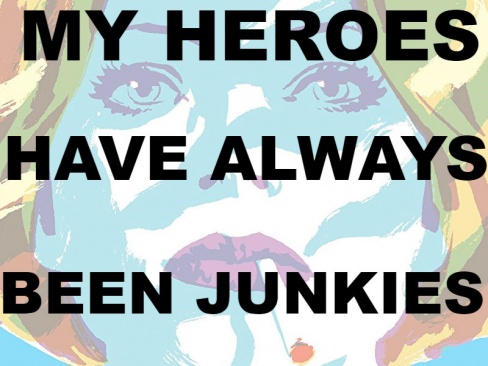
The longest thing about “My Heroes Have Always Been Junkies,” from the unbeatable duo of writer Ed Brubaker and artist Sean Phillips, with colors by Jacob Philips, maybe the title. This stealth “Criminal” continuation gets in and out at 70 pages, the second lowest page count of the recognized books. Within those 70 pages is a John Hughes coming of age story mixed with the Scorsese like fascination with criminality and the not-so-good things people do to survive and for the ones they love. Brubaker, Phillips, and Philips don’t waste a page.
“Junkies” is a quick, enjoyable read, but what kept me coming back to it was the contradictions embedded in the book and how those contradictions pull on our main character. Sean Phillips clean line work is juxtaposed against Jacob Philips splashes of expressionist pastel colors. The tension of being pulled in multiple tonal and generic directions could have been its undoing but the creative teams control of pace and tone, allow them to go from a Hughes like high school romance to dark criminality at the turn of a page and keep everything consistent. Brubaker’s internal dialogue for Elle could have come off as a touch maudlin, but with Jacob Philips pastel lighting the way it becomes the prose accompaniment to a hazy aesthetic of a neo-noir.
“My Heroes Have Always Been Junkies” reads like a successful experiment from a ultra-consistent creative team. Publishing this as a graphic novella shows a commitment to experiment with length and publishing format to tell the best story possible. This story would not have been as good if it were a two part monthly story. If it were much longer, Elle’s monologuing about all the “junkie” artists she admires would have turned maudlin. Instead we get this dense character study of Elle, and a rumination on the nature of addicts. Making it one of the best original graphic novels of the year. – Michael Mazzacane
3. All Summer Long

I mentioned in our holiday gift guide that this book was the best thing I read all year. I said it in passing, without really considering all the other novels, comics, non-fiction, and bathroom walls I came across this year, and I instantly felt that flood of panic when you may have painted yourself into a corner on the internet. But after consulting my Goodreads list and thinking about the year from a bit of a distance, I stand by my statement: “All Summer Long” is the best thing I read in 2018.
Hope Larson creates an intensely familiar world for “All Summer Long” to inhabit: the headspace of a confused teenager. Bina is one of the most relatable characters in recent memory, and her struggles to fit in with her family, her friends, and her passions feel just as applicable to my life now, twenty plus years removed from Bina’s situation, as it likely would have if I read this back in 1995.
The book takes most of the salacious parts of teenage life out of the equation, and focuses on the emotional reality of not quite knowing what your world looks like yet, or how you should be fitting into it. But it also does something that is incredibly difficult to get across in print: not just music, but cool music. Brina’s taste in music comes across as legitimate, and Larson manages to make the music not seem corny or overly high brow, but like a band that a cool teenager would be into.
Continued belowLarson is working on two more installments in this series, and I can’t wait. Let’s save a spot for them on future lists to save us some time. – Brian Salvatore
2. The Adventure Zone, Vol 1: Here There Be Gerblins
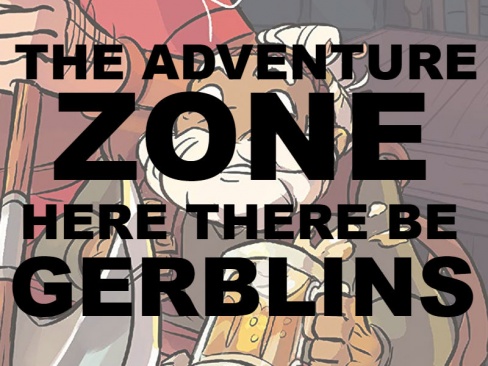
Typically when a group of brothers play Dungeons & Dragons with their dad it would most likely go unspoken about. If you are the McElroy brothers, you record it as a comedy podcast that runs for 69 episodes over three years…and then turn it into a graphic novel series. If you are unfamiliar with the McElroys, they are a trio of 30-something brothers with more podcasts touching on more subjects than should ever be possible for three people.
“The Adventure Zone: Here There Be Gerblins” is the first volume in the graphic novel series and covers the first six-episode arc of the podcast. The set up for the show is this: the three McElroy brothers, Justin, Travis, and Griffin decided to sit down and play a game of D&D with their father and record it because none of them were well-versed in the game and they thought it would make for a funny time, after all they are widely known for their comedic podcasts. With youngest brother Griffin, the most familiar with the game, as Dungeon Master; they set out to do something fun with simple hopes that it would be enjoyed by whoever gave a listen, D&D fans or not. Justin, Travis, and their father Clint created their characters and set out for adventure. What we ended up getting over the course of three years was not only an extremely funny podcast, but also one with a wonderfully detailed story with excitement, scares, and dare I say, heart. Having been a huge fan of the podcast, I was hesitant from the start when discussion of a comic adaptation started rolling around. Sure, a version of the story could be turned into a comic book, but how would they be able to capture all of the dialogue, the jokes between the guys as they made their way along the learning curve, and the side conversations? All of these elements make The Adventure Zone what it is and missing any of it would make for a lesser experience, no matter how well produced. The final product is more than I could have ever imagined. Taking the story, ingeniously created by Griffin, Clint takes on the exceptional task of adapting it for this series, and with the help of co-adaptor and artist Carey Pietsch, executes it perfectly.
A densely populated world with an incredibly layered story miraculously makes its way to the page. While not every word spoken could ever be included, Clint does an outstanding job bringing the in-game dialogue and an incredible amount of the asides to the book. Even the inclusion of Griffin’s breaking of the fourth wall to come in as the omniscient D.M. is handled exactly the way it should be: popping into the world of the game and even scaring the heroes when doing so. This is one of the few times I can say that a world that I initially had to envision in my head came to nearly match what I thought up. Seeing the Human Warrior, Magnus Burnsides, Elf Wizard, Taako, and Dwarf Cleric, Merle Highchurch be fully realized in more than just voice is a treat and Carey Pietsch’s character design is perfect.
Known for a wide array of fantasy comics, Pietsch is the perfect choice for this series. Neither this book, nor the podcast, is for kids, but her bubbly, children’s storybook style somehow captures the exact tone of the story. If nothing else, it makes for another, very subtle, joke. Her detail is light and fun and the color work is excellent. While keeping within those guidelines we get some outstanding color work from her as well. She balances between simple, basic color work and setting the mood. She allows for the world building to go even further and it is nothing short of beautiful. I can’t imagine a better artist to work with the McElroys on this book. Obviously, if you don’t plan on listening to the podcast, this is as close to the experience you can get. And while you won’t see every little detail from the show in this format, it’s damn close and I can whole-heartedly and confidently recommend this version to anyone looking to check out this world specifically or for any adventure romp.
Continued belowWhile there were quite a few truly great graphic novels in the past year, the fact that this book was not only able to get made, but made so damn well is why it is my choice for 2018’s Best Original Graphic Novel. – Chris Egan
1. The Prince and the Dressmaker
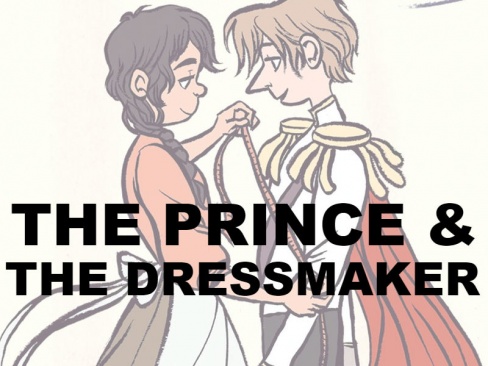
At the center of Jen Wang’s stunning contemporary fairytale “The Prince and the Dressmaker” lies a secret: Prince Sebastian likes to wear dresses. Even he doesn’t understand why, he just knows it’s a fact. As he confides Frances, the titular seamstress, early in the story, “Some days I look at myself in the mirror and think, ‘That’s me, Prince Sebastian. I wear boy clothes and look like my father.’ Other days it doesn’t feel right at all. Those days I feel like I’m actually a princess.”
On those days, he puts on a dress and becomes Lady Crystallia, the proverbial belle of the ball. It’s an incredibly powerful, almost magical transformation, but it doesn’t last. In fact, it remains a secret that Sebastian dares not reveal to anyone outside of his immediate circle of confidants, especially his parents. “I’m the king’s only son,” he says. “If anybody found out the prince wore dresses, it would ruin the entire family.” Throughout most of the book, this nagging sense of guilt – and Sebastian’s unrelenting sense of duty to those around him – organically powers the plot as Wang challenges and subverts traditional fairytale tropes to interrogate themes of love, self esteem, gender and acceptance.
Visually, it’s nothing short of a tour de force. With lush period settings, impeccable page layouts and a seamless visual flow – not to mention incredible costumes – the book is like a creation from its titular seamstress, Frances: an exquisitely constructed, stunning, one of a kind creation. It’s also incredibly accessible, with the kind of bold, clean lines and vibrant colors that are a hallmark of so many all ages comics and graphic novels.
Whether it’s a simple street scene depicting a carriage on cobblestones, an opulent palace ballroom or the Prince’s private chambers, Wang’s immersive pictures whisk you away to a different time and place. Not a single panel is wasted as the visual narrative breezes along, intuitively balancing facial close-ups and hand gestures with distinctive period details that keep the story grounded in a haute couture Parisian aesthetic. The dresses, of course, are the highlight, with each gown upstaging the last. I mean, you can virtually hear the swoosh and rustle of the fabrics as the characters move about.
In the end, Wang’s simple yet profound choice to situate the story within the fairy tale genre creates a brilliant juxtaposition that ingeniously informs every scene. With relatable dialogue that sounds unexpectedly youthful and fresh and feisty, well rounded characters whose emotions are palpable, Wang deftly undermines classic storytelling conventions in subtle yet clever ways. “You’re not weirded out?” asks the prince after revealing his innermost secret to Frances. “What difference does it make?” she replies. “This is my dream job. We can help each other.” The visuals may transport the reader to an imaginative fantasyland, but the dialogue and characterizations bring it all back, making the protagonists feel more immediate and authentic.
Ultimately, in a day to day real world context where tribalism, exclusion and a lack of empathy increasingly feel like the norm, it seems virtually impossible to overstate Wang’s remarkable achievement. “The Prince and the Dressmaker” is not only a masterfully constructed, highly entertaining all ages graphic novel filled to the brim with smart dialogue, well realized characters and gorgeous artwork, its tender exploration of gender fluidity, nonbinary romantic love and acceptance feel nothing short of revolutionary. – John Schaidler
Editors’ Notes:
Matt: I think this list might be one of the best representations of what comics mean as a medium. A few years ago, Paul Lai coined the term “The Spectrum Age” to describe the current era we’re in. This broad swath of material — superhero comics, YA comics, young reader comics, weird comics, lit comics, etc. — all has a place. I think our staff made some strong choices in this category.
Brian: I couldn’t have said it better myself, Matt. Want to see what comics are in 2018? Check out these books.






